-
 bitcoin
bitcoin $109523.663807 USD
-0.13% -
 ethereum
ethereum $4019.526508 USD
2.06% -
 tether
tether $1.000482 USD
0.00% -
 xrp
xrp $2.776815 USD
0.18% -
 bnb
bnb $958.942396 USD
0.12% -
 solana
solana $204.294698 USD
3.84% -
 usd-coin
usd-coin $0.999693 USD
0.00% -
 dogecoin
dogecoin $0.232115 USD
2.09% -
 tron
tron $0.338028 USD
0.84% -
 cardano
cardano $0.790920 USD
1.50% -
 hyperliquid
hyperliquid $44.871443 USD
5.60% -
 ethena-usde
ethena-usde $1.000322 USD
0.04% -
 chainlink
chainlink $21.034165 USD
2.60% -
 avalanche
avalanche $28.794831 USD
-0.54% -
 stellar
stellar $0.360466 USD
1.24%
How much is Binance leverage interest
Binance leverage interest rates are influenced by market conditions, borrowing duration, loan-to-value (LTV) ratio, and asset volatility.
Nov 09, 2024 at 01:48 am
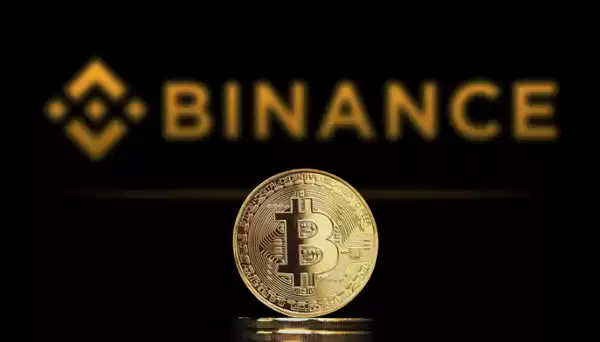
Binance leverage interest is a predetermined fee charged by Binance for borrowing funds in order to trade with leverage. Leverage allows traders to access a larger capital amount to trade with, potentially amplifying their profits. However, this comes with the increased risk of significant losses.
Factors Affecting Binance Leverage InterestThe leverage interest rate charged by Binance is primarily determined by the following factors:
- Market Conditions: Interest rates may fluctuate based on market volatility and liquidity levels.
- Borrowing Duration: Longer borrowing periods typically incur higher interest charges.
- Loan-to-Value (LTV) Ratio: Higher LTV ratios, indicating a higher proportion of borrowed funds, usually result in elevated interest rates.
- Asset Volatility: Leveraging volatile assets may incur higher interest rates due to the increased risk associated with price fluctuations.
The formula for calculating Binance leverage interest is as follows:
Interest = (Borrowed Amount Interest Rate Number of Days) / 365Interest Rate CalculationBinance determines the interest rate for leveraged trading based on a combination of factors, including:
- Risk-Free Rate: A benchmark interest rate, such as the 3-month USD LIBOR.
- Risk Premium: To account for the additional risk associated with leverage.
- Liquidity Premium: To reflect the supply and demand for borrowed assets.
- Minimize Leverage: Using a lower leverage ratio reduces the amount of borrowed funds and, consequently, the interest charges.
- Shorten Borrowing Duration: Closing the leveraged position sooner minimizes the duration of interest accrual.
- Diversify Assets: Distributing funds across multiple assets with varying volatility levels can mitigate interest costs.
- Consider Limit Orders: Executing trades using limit orders helps avoid unfavorable market movements and reduce potential losses, which can lower overall interest expenses.
- Margin Calls: Failure to maintain sufficient margin to cover potential losses can lead to a margin call, requiring the addition of more funds or the liquidation of open positions.
- Compounding Losses: Interest charges accumulate over time, exacerbating potential losses if trades go against expectations.
- Unexpected Market Fluctuations: Leverage interest calculations do not account for sudden market fluctuations, which can magnify both gains and losses.
- Margin Trading: Similar to leveraging, margin trading allows traders to borrow funds, but interest charges are typically determined by the lender.
- Spot Trading: Trading using only available funds avoids the interest charges associated with leveraging.
- Copy Trading: Following the trades of experienced traders eliminates the need for leverage and interest charges.
- Futures Contracts: Trading futures contracts involves a different fee structure, typically involving a single execution fee rather than ongoing interest charges.
Binance leverage interest is a crucial factor to consider when engaging in leveraged trading. Understanding the factors influencing interest rates and employing strategies to minimize them is essential for effectively managing leveraged positions and avoiding excessive costs. Traders should carefully evaluate the risks associated with leveraging and consider alternative trading methods if appropriate.
Disclaimer:info@kdj.com
The information provided is not trading advice. kdj.com does not assume any responsibility for any investments made based on the information provided in this article. Cryptocurrencies are highly volatile and it is highly recommended that you invest with caution after thorough research!
If you believe that the content used on this website infringes your copyright, please contact us immediately (info@kdj.com) and we will delete it promptly.
- Ethereum Price Crash Concerns: Navigating the Volatility
- 2025-09-27 16:45:11
- Bitcoin's Bull Flag and FVG: Decoding the Crypto Crystal Ball
- 2025-09-27 16:25:14
- Ozak AI's $OZ Token: Riding the AI & Blockchain Profit Surge
- 2025-09-27 16:25:14
- Remittix Token Presale: CertiK Verification and PayFi Innovation
- 2025-09-27 16:30:00
- XRP Chart Signal Sparks Price Rally Buzz: Is a Breakout Imminent?
- 2025-09-27 16:45:11
- Vitalik, Chat Control, and Privacy Security: A Balancing Act
- 2025-09-27 16:30:00
Related knowledge

How do I enable the "scalping-only" mode for Cardano (ADA) contracts?
Sep 24,2025 at 03:19am
Understanding Scalping Strategies in Crypto Derivatives1. Scalping in cryptocurrency trading refers to executing multiple short-term trades within min...
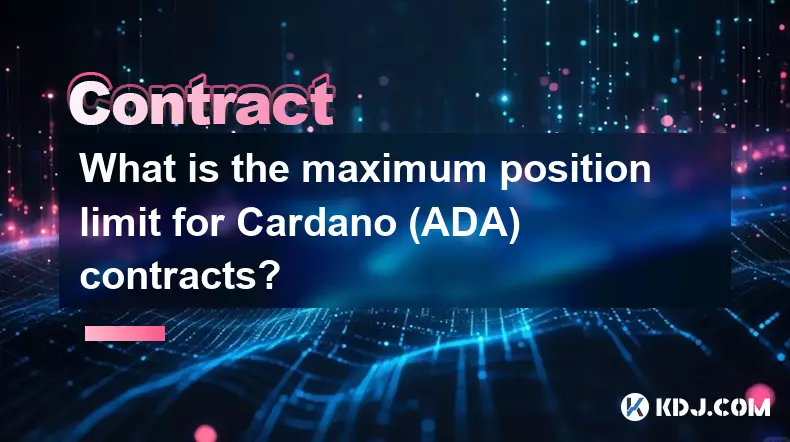
What is the maximum position limit for Cardano (ADA) contracts?
Sep 23,2025 at 11:00pm
Understanding ADA Futures and Derivatives Market Structure1. Cardano (ADA) futures contracts are offered by several major cryptocurrency derivatives e...
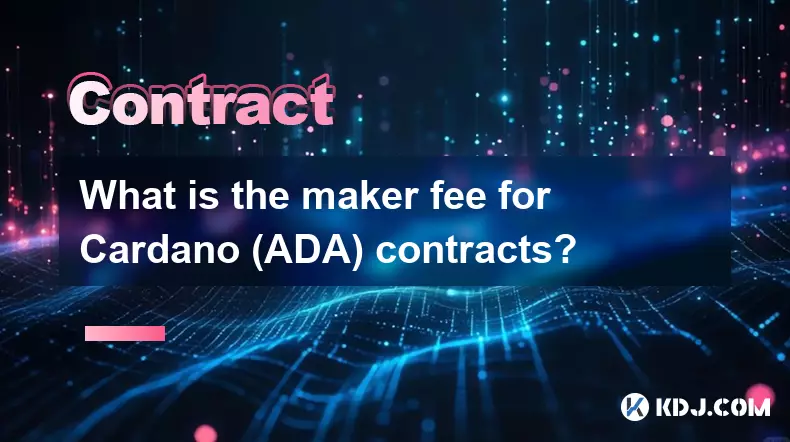
What is the maker fee for Cardano (ADA) contracts?
Sep 26,2025 at 09:01am
Understanding Maker Fees in Cardano (ADA) Contracts1. The concept of maker fees applies broadly across decentralized exchanges and smart contract plat...
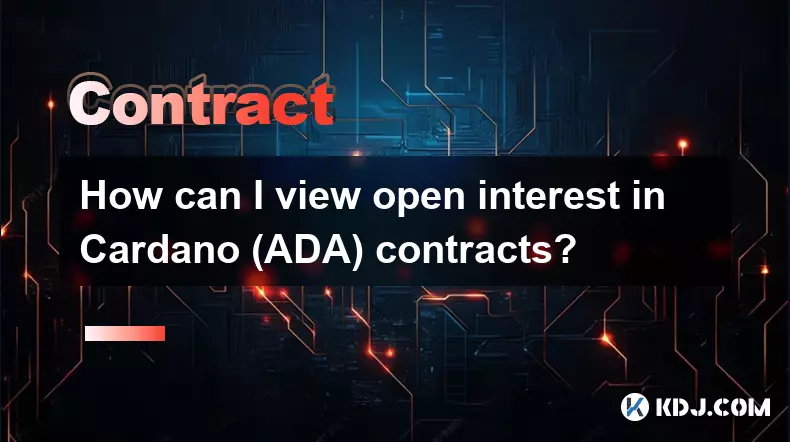
How can I view open interest in Cardano (ADA) contracts?
Sep 24,2025 at 07:36am
Understanding Open Interest in Cardano Derivatives1. Open interest refers to the total number of outstanding derivative contracts, such as futures or ...

How do I modify the price of a pending order in Cardano (ADA) contracts?
Sep 27,2025 at 01:00am
Understanding Pending Orders in Cardano Smart Contracts1. Cardano operates on a proof-of-stake blockchain that supports smart contracts through its Pl...
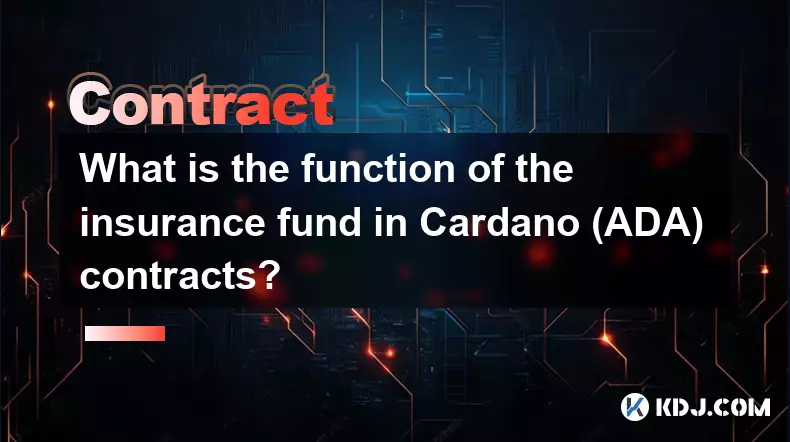
What is the function of the insurance fund in Cardano (ADA) contracts?
Sep 24,2025 at 02:18am
Understanding the Role of Insurance Funds in Cardano Smart Contracts1. The insurance fund within Cardano's ecosystem is not a native feature directly ...

How do I enable the "scalping-only" mode for Cardano (ADA) contracts?
Sep 24,2025 at 03:19am
Understanding Scalping Strategies in Crypto Derivatives1. Scalping in cryptocurrency trading refers to executing multiple short-term trades within min...

What is the maximum position limit for Cardano (ADA) contracts?
Sep 23,2025 at 11:00pm
Understanding ADA Futures and Derivatives Market Structure1. Cardano (ADA) futures contracts are offered by several major cryptocurrency derivatives e...

What is the maker fee for Cardano (ADA) contracts?
Sep 26,2025 at 09:01am
Understanding Maker Fees in Cardano (ADA) Contracts1. The concept of maker fees applies broadly across decentralized exchanges and smart contract plat...

How can I view open interest in Cardano (ADA) contracts?
Sep 24,2025 at 07:36am
Understanding Open Interest in Cardano Derivatives1. Open interest refers to the total number of outstanding derivative contracts, such as futures or ...

How do I modify the price of a pending order in Cardano (ADA) contracts?
Sep 27,2025 at 01:00am
Understanding Pending Orders in Cardano Smart Contracts1. Cardano operates on a proof-of-stake blockchain that supports smart contracts through its Pl...

What is the function of the insurance fund in Cardano (ADA) contracts?
Sep 24,2025 at 02:18am
Understanding the Role of Insurance Funds in Cardano Smart Contracts1. The insurance fund within Cardano's ecosystem is not a native feature directly ...
See all articles










































































